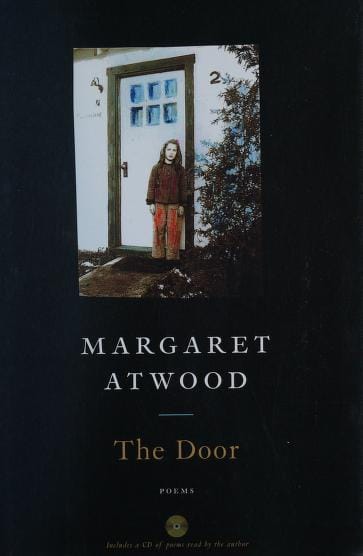Norwegian Wood: From Beatles Ballad to Sustainable Scandinavian Timber
Discover Norwegian wood’s cultural roots and eco-friendly appeal, covering the Beatles classic, Murakami’s novel, and sustainable Scandinavian timber.

Introduction to Norwegian Wood
"Norwegian wood" is a phrase that evokes different images depending on who you are. For music lovers, it recalls a wistful track on the Beatles’ landmark 1965 album Rubber Soul. For bookworms, it stirs memories of Haruki Murakami’s 1987 coming-of-age novel. For architects and eco-enthusiasts, it signifies high-quality spruce and pine harvested responsibly from Norway’s vast boreal forests. In every case, Norwegian wood symbolizes warmth, nostalgia, and an understated Scandinavian elegance that continues to resonate across popular culture, literature, and sustainable design.
The Beatles’ “Norwegian Wood (This Bird Has Flown)”
When John Lennon brought the early demo of “Norwegian Wood” to Abbey Road Studios, he had no idea the track would revolutionize Western pop. Released at the height of Beatlemania, the song introduced new textures, including George Harrison’s pioneering sitar lines influenced by Ravi Shankar. The acoustic rhythm, airy melody, and veiled lyrics marked the band’s shift from straightforward love songs to more introspective storytelling. "Norwegian Wood" stands today as a turning point that opened the doors for psychedelic production and Eastern instrumentation in mainstream rock.
Lyrics and Hidden Meanings
At first listen, the narrative seems simple: boy meets girl, boy sleeps on hardwood floors when romance fizzles. Yet Lennon hinted that “Norwegian wood” was a tongue-in-cheek reference to inexpensive pine paneling popular in 1960s British flats. The song’s ambiguous ending—"So I lit a fire, isn’t it good, Norwegian wood?"—invites speculation. Did he set her furniture ablaze in frustration or merely stoke a fireplace? This deliberate vagueness has fueled decades of debate, cementing the song’s status as a cultural touchstone and SEO magnet for fans still seeking lyrical explanations.
Haruki Murakami’s Novel “Norwegian Wood”
Over two decades later, Japanese author Haruki Murakami borrowed the song’s mood for his breakout novel. Centered on university student Toru Watanabe in late-1960s Tokyo, the story explores grief, sexuality, and the aching transition into adulthood. Like the Beatles track, the novel balances melancholy with moments of serene beauty. Murakami’s title signals not just a homage but also a thematic echo: the fragile allure of something that can ignite passion yet remain elusive. The book catapulted Murakami to global fame, selling millions of copies and spawning a 2010 film adaptation, thereby extending Norwegian wood’s literary footprint.
Sustainable Scandinavian Timber
Beyond music and literature, Norwegian wood exists in its most literal form—slow-grown spruce and pine cultivated under harsh Nordic climates. Long winters and short growing seasons produce tight grain patterns that enhance strength and dimensional stability. Norway enforces rigorous forestry regulations based on the PEFC and FSC certification systems, ensuring that more trees are planted than harvested. This cyclical stewardship positions Norwegian timber as a gold standard for eco-friendly building materials, optimizing carbon sequestration while minimizing habitat disruption.
Characteristics of Norwegian Spruce and Pine
Norwegian spruce (Picea abies) is lightweight yet strong, making it a favored choice for load-bearing walls, glulam beams, and musical instrument soundboards—yes, including some guitars inspired by that famous Beatles chord. Pine, particularly Scots pine (Pinus sylvestris), offers a warmer hue and higher resin content that resists decay. Both species machine well, accept stains uniformly, and emit a subtle, calming scent often described as quintessentially Nordic. These traits combine to create a versatile material prized by carpenters, furniture makers, and DIY enthusiasts alike.
Applications in Modern Architecture and Interior Design
Scandinavian design principles—simplicity, functionality, and connection to nature—are seamlessly embodied by Norwegian wood. In architecture, it features in energy-efficient passive houses, cross-laminated timber (CLT) high-rises, and striking cultural landmarks such as Oslo’s new MUNCH museum. Interior designers value its pale coloration and delicate knots, which pair effortlessly with neutral palettes and minimalist décor. Whether showcased as exposed ceiling beams or tongue-and-groove wall panels, Norwegian wood introduces organic warmth without overwhelming a space, boosting well-being and biophilic engagement.
Why Choosing Norwegian Wood Matters
Opting for certified Norwegian timber is not just a stylistic choice; it is an environmental statement. Studies show that wooden buildings can store up to 50 percent less embodied carbon compared to conventional steel or concrete structures. Transport emissions are also reduced thanks to efficient Nordic shipping networks. By selecting locally sourced, responsibly managed wood, consumers support rural Norwegian economies, preserve biodiversity, and champion a renewable material that grows literally from sunlight and rain. From Beatles ballads to bookshelf panels, Norwegian wood’s enduring appeal proves that good stories—and good materials—never go out of style.



